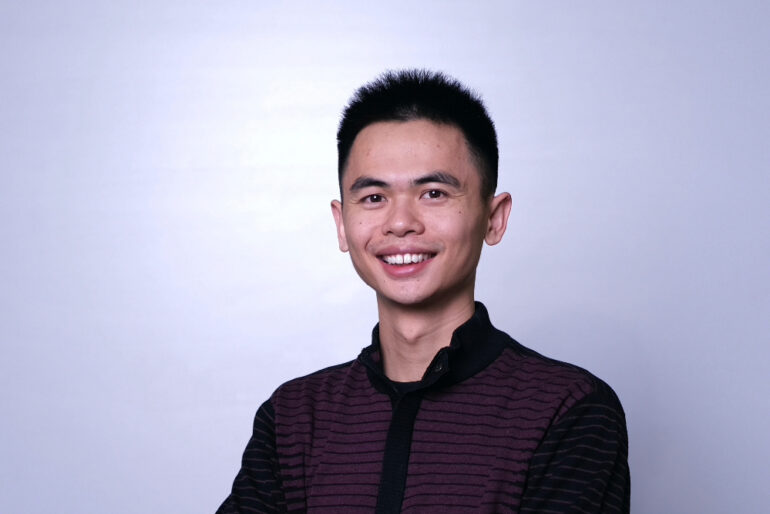Dr. Freeman Lan has recently joined the Institute of Biomedical Engineering at the University of Toronto as an Assistant Professor.
After obtaining his undergraduate degree in biochemistry from the University of Toronto, Dr. Lan pursued his PhD under the guidance of Professor Adam Abate at UC Berkeley and UC San Francisco, starting in 2011. During this period, he focused on the development of microfluidic devices for sequencing individual cells.
Following the completion of his PhD, Dr. Lan furthered his research as a postdoctoral fellow under the mentorship of Professor Ophelia Venturelli at UW Madison. During this time, he continued to leverage his expertise in microfluidics, ultimately devising a robust and widely applicable method for high-throughput single-cell sequencing of microbes. This methodology was then applied to investigate the microbial communities in the human gut.
Since 2013, Dr. Lan had published 7 peer-reviewed research papers in notable journals such as Nature Biotechnology, Nature Communications, and Nature Biomedical Engineering.
What will be the goal of your research group in BME at the University of Toronto?
Our goals are two fold – one is to develop and popularize ultrahigh-throughput experimentation, which is a new class of experimental approaches that leverages microfluidics technology to conduct massive amounts of experimental assays. Here’s an example to illustrate what I mean: a typical biochemical reaction (such as for a covid test) involves a reaction volume of 0.5-0.1mL and a liquid transfer step which occurs on the scale of 1-10 seconds (whether by human or robot). Using microfluidics technology, we can reduce the volume down to 1/100,000 of a mL or approximately 10pL. We can also increase the speed at which we transfer these liquids to 1/1000 – 1/10,000 of a second. This means that, we can now conduct millions of reactions cheaply and quickly which enables us to take a drastically different approach to experimentation which involves the generation and analysis of massive amounts of data.
This brings us to our second goal, which is to understand and engineer the human gut microbiome. The human gut microbiome contains hundreds of microbial species each of which exhibits immense intra-species heterogeneity. The sheer diversity and complexity of the human gut microbiome makes it a daunting task to study using traditional microbiology experimental techniques. Using ultrahigh-throughput experimentation we can conduct enough assays to tease apart the many different pieces of a microbiome. With a better understanding of the microbiome, we can begin to manipulate it for therapeutic and other benefits.
What is a current research challenge that you are interested in tackling in the next 10 – 20 years?
A major challenge that we would like to tackle is the precise engineering of the human gut microbiome. The gut microbiome is involved in many aspects of our biology including the immune system, metabolism, and even our mood. It also can be changed by external forces such as diet, living habits, and drugs such as antibiotics. If we could understand the microbiome enough to predictably change it to say, remove a detrimental species or gene and replace it with something beneficial, it would be a powerful new way improve human health. However, the forces governing the microbiome is very complex and our understanding of it is still very rudimentary. Tackling this goal requires inventing new tools and approaches to accelerate our understanding of the microbiome. With an improved understanding, we can begin to develop ways to precisely manipulate the human gut microbiome.
What is your teaching philosophy?
My teaching philosophy revolves around 2 main ideas.
Teach concepts and knowledge frameworks – Knowledge is powerful only when we connect it together into knowledge networks and conceptual understandings. For example a series of enzyme functions might be difficult to remember in isolation, but if we understand them in the context of their roles in the pathway, it becomes both meaningful and easier to remember. And in the end, a conceptual understanding of their function within the pathway can serve as a framework to understand other similar enzymes. With access to a vast body of knowledge in the modern world, knowledge structures and conceptual frameworks serve as anchors from which we grow our knowledge base.
Teaching science/engineering as it is done – I believe that the experience of learning science and engineering should resemble the experience of practising science and engineering. Science and engineering training at the university should prepare students as future scientists and engineers. For this reason, I believe the experience of learning science/engineering should be as close as possible to the experience of doing science/engineering. This means that I like to focus the learning experience on the generation and synthesis of knowledge, hands-on problem solving, peer-driven discussions, and collaboration.
In addition to these two main ideas, I also strive to impart the value of good ethics, inclusivity, and equitability to my students.
How would you describe yourself outside of research?
Outside of science, I enjoy hiking, dancing, learning tai chi and an ancient Chinese stringed musical instrument called Guqin.


